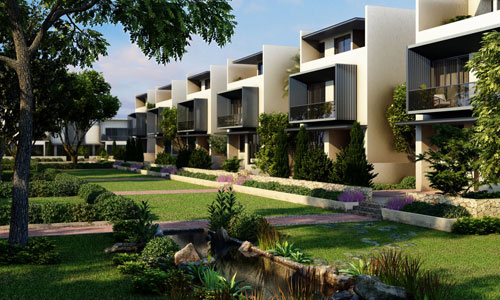
FDI inflows to real estate, telecom decline: ASSOCHAM
There has been a substantial decline in foreign direct investments (FDI) in high-growth potential sectors like housing and real estate, construction activities and telecommunications in 2010-11.

There has been a substantial decline in foreign direct investments (FDI) in high-growth potential sectors like housing and real estate, construction activities and telecommunications in 2010-11.

The introduction of FDI in multi-brand retail will lead to increased demand, which in turn will catalyze more investment opportunities in organized retail.

The housing and real estate sector in India witnessed foreign direct investment (FDI) of $2.8 billion in the fiscal year (April-March) 2009-10, according to Indian Department of Industrial Policy and Promotion. The statistics made available to the media at the India Home property exhibition, which concluded in Dubai on Sunday, revealed that total NRI FDI inflows through the period April-December 2009-10 stood at $320.05 million.

While the foreign direct investment flows (FDI) dependent Indian realty market is awaiting a good fortune, a World Bank report brings cheer to the industry. It says the FDI into developing countries including India is expected to recover over the next couple of years and is projected to increase by 17 per cent in 2010.

As the education sector evolves, factors such as technology permeation, revamped building designs, and focus on health & safety are likely to define education real estate. Besides, modern educational building design must prioritise flexibility so that spaces can be reconfigured to adapt to various teaching methods and activities, developing a dynamic learning environment. To address this and move away from traditional classroom setups, educational buildings now include collaborative spaces to encourage teamwork and group learning. Moreover, sustainable, and eco-friendly design elements, such as energy-efficient systems and natural lighting, are becoming increasingly common to reduce the environmental impact of educational buildings.

In a report titled, ‘Fortifying India’s I&L landscape with a new manufacturing growth formula’, property consultant CBRE claims that the manufacturing sector’s growth has significantly contributed to warehousing demand. The share of sectors catering to the manufacturing space, including engineering & manufacturing, electronics & electricals and auto & ancillary sectors, within the total warehousing demand across major cities, has increased substantially, growing from 15% in 2019 to 24% in 2023 and 25% in H1 2024. The total leasing for warehousing from these manufacturing-related sectors stood at 4.1 mn. sq. ft. in H1 2024.

This long-term growth in real estate is underpinned by six salient growth levers which includes, rapid urbanization, infrastructure development, digitalization, demographic shifts, sustainability and investment diversification; all of which will form the bedrock for a quantum leap in Indian real estate by 2047. These long-term growth ingredients will be pivotal in the expansion of Indian real estate – from under a trillion currently, to potentially a USD 10 trillion market by 2047, accounting for a 14-20% share in the country’s GDP.

Understanding the mindset of Indian real estate has never been easy. The built environment of the Indian real estate could argue and demolish the best of consumer-centric reforms. Remember the way industry body CREDAI had called RERA prior to its inception, and that too in front of the then Union Minister Kamal Nath, builder harassment and public amusement bill. But at the same time they celebrate the self-inflicted injury on many occasions. Track2Realty finds the overtones of the sector all the more contradictory with the Union Budget, before and after the budget.

In contrast, with USD 0.3 billion of investments in office assets, the segment witnessed subdued activity in Q2 2024. Although the annual decline was significant at 83%, the QoQ drop was relatively modest at 41%. The surge in industrial & warehousing, and residential investments resulted in a healthy investment volume of USD 3.5 billion for H1 2024 at an overall level, making up for the slow start in first quarter. Foreign investments remained robust, accounting for 81% of the total inflows in Q2 2024, predominantly led by investors from the US and UAE.

Owing to rapid industrial growth and the emergence of one of the fastest growing real estate segments in the country, India’s warehousing sector is set to cross the 300 million square feet (MSF) mark by 2025, according to a report jointly launched by CREDAI and CRE Matrix. Currently, the overall Grade A warehousing stock stands at 216.2 MSF. In Q1 CY ’24, India witnessed a 5% increase in rentals – reflecting how India’s warehousing demand continues to surpass supply – with the absorption to supply ratio standing at 1.4 in the quarter.
